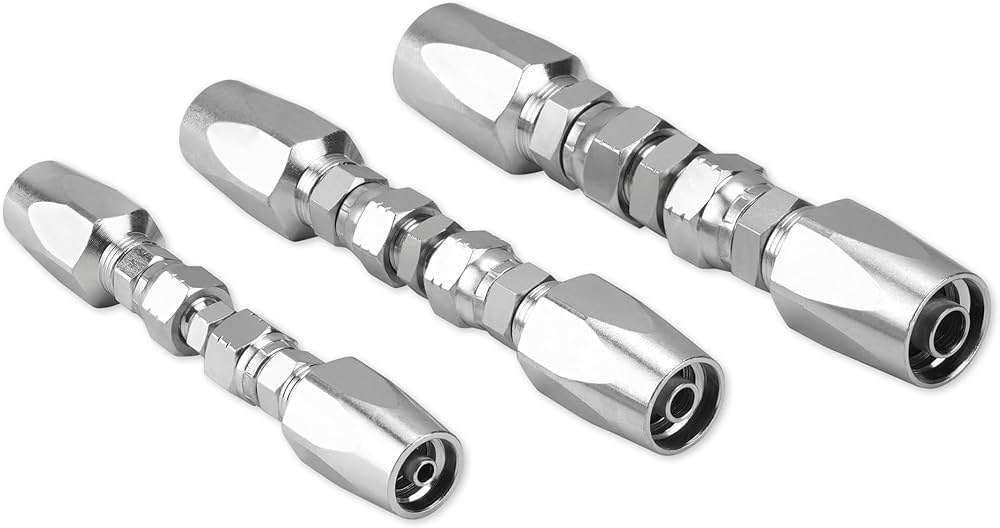
Hydraulic systems are vital components of many industries, powering machinery and equipment to perform tasks with precision and efficiency. Central to these systems are hydraulic hoses, which serve as the lifelines, carrying fluid under high pressure to various parts of the machinery. While these hoses are designed to be durable, neglecting their maintenance can lead to costly failures, downtime, and even safety hazards. Regular maintenance plays a crucial role in extending the lifespan of hydraulic hoses, ensuring smooth operations and reducing long-term expenses.
Understanding Hydraulic Hoses and Their Role
Hydraulic hoses are engineered to withstand high pressure, extreme temperatures, and challenging environmental conditions. They are typically made of reinforced rubber or thermoplastic materials and are used in industries such as construction, agriculture, manufacturing, and transportation. These hoses facilitate the transfer of hydraulic fluid, which is essential for powering mechanical components such as cylinders, motors, and valves. Given their critical function, maintaining their integrity is paramount.
Why Regular Maintenance Matters
-
Prevents Unexpected Failures Hydraulic hoses are subjected to constant stress due to high-pressure fluids, environmental factors, and repetitive movement. Over time, this wear and tear can lead to cracks, leaks, or bursts. Regular inspections help identify early signs of damage, preventing unexpected failures that could disrupt operations.
-
Ensures Safety A malfunctioning hydraulic hose can pose significant safety risks, such as fluid leaks or bursts under high pressure. These incidents can cause injuries to personnel and damage to machinery. Routine maintenance minimizes these risks by addressing potential issues before they escalate.
-
Reduces Downtime Unplanned downtime due to hydraulic hose failure can result in operational delays and financial losses. Scheduled maintenance ensures that hoses are in optimal condition, reducing the likelihood of sudden breakdowns and keeping machinery running smoothly.
-
Cost-Effective Solution Replacing a damaged hydraulic hose repair is often more expensive than maintaining it. Regular maintenance helps avoid costly repairs or replacements by prolonging the hose’s lifespan and preventing collateral damage to other components.
-
Enhances Performance Well-maintained hydraulic hoses ensure consistent fluid flow, which is essential for optimal system performance. Neglected hoses may lead to reduced efficiency, affecting the overall productivity of the equipment.
Key Steps in Hydraulic Hose Maintenance
-
Regular Inspections Conduct visual inspections of hydraulic hoses to check for signs of wear, such as cracks, abrasions, or leaks. Pay attention to the fittings and connections, as they are common points of failure.
-
Monitor Operating Conditions Ensure that the hydraulic system operates within the specified pressure and temperature ranges. Exceeding these limits can accelerate hose deterioration.
-
Cleanliness is Key Contaminants in hydraulic fluid can damage hoses and other system components. Regularly check and replace filters, and ensure the fluid is clean and free of debris.
-
Replace Worn Components Replace hydraulic hoses that show significant wear or damage. It’s better to replace a hose proactively than to risk a catastrophic failure.
-
Proper Storage Store spare hydraulic hoses in a cool, dry place away from direct sunlight and chemicals. Proper storage conditions help prevent premature aging of the hoses.
-
Use the Right Hose for the Job Ensure that the hydraulic hoses used are appropriate for the specific application. Using the wrong type of hose can lead to quicker wear and tear.
Signs Your Hydraulic Hose Needs Attention
-
Visible Cracks or Abrasions Check for cracks, cuts, or abrasions on the hose surface. These are clear indicators of wear and potential failure.
-
Fluid Leaks Leaking fluid near the hose connections or along the length of the hose indicates a problem that requires immediate attention.
-
Bulges or Blisters Bulging or blistering on the hose surface suggests internal damage and pressure imbalances.
-
Stiffness or Soft Spots Changes in the hose’s flexibility, such as stiffness or soft spots, can indicate aging or internal deterioration.
-
Unusual Noises Whistling or hissing sounds may point to fluid leaks or air entering the system through a damaged hose.
Benefits of a Proactive Maintenance Strategy
-
Improved Equipment Reliability Proactively maintaining hydraulic hoses ensures consistent equipment performance, reducing the risk of sudden failures.
-
Increased Lifespan Routine maintenance extends the lifespan of hydraulic hoses, maximizing the return on investment.
-
Enhanced Operational Efficiency Well-maintained hoses contribute to the efficient functioning of hydraulic systems, boosting overall productivity.
-
Better Resource Management Regular maintenance helps manage resources effectively by minimizing unplanned expenditures on repairs and replacements.
Hydraulic hoses are indispensable components of hydraulic systems, and their maintenance should never be overlooked. Regular inspections, timely replacements, and adherence to best practices are essential to ensure the longevity and reliability of these vital components. By investing in routine maintenance, businesses can avoid costly disruptions, enhance safety, and maximize the efficiency of their operations. Ultimately, the key to hydraulic hose longevity lies in a proactive approach to maintenance, prioritizing prevention over repair.





Leave a Reply